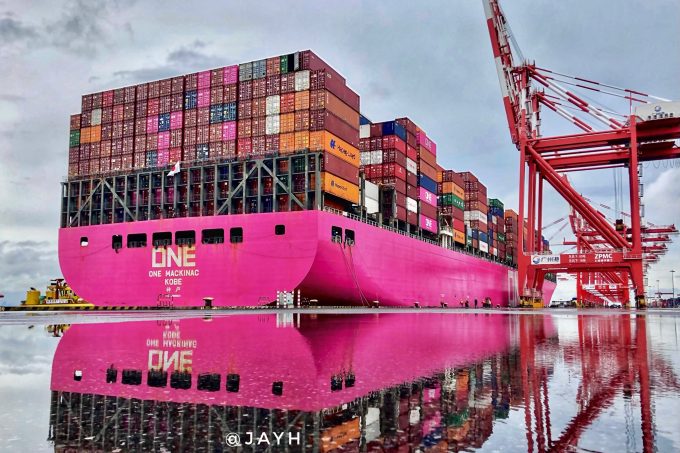Hapag-Lloyd unveils Strategy 2030, with $120m retrofit plan for 'greener' fleet
Hapag-Lloyd and non-operating shipowner Seaspan have announced a $120m investment to retrofit five 10,000 teu ...

The bull run for ocean carriers appears unstoppable, with profitability in the first quarter of the year looking to be even better than expected.
And notwithstanding continued disruptions in the supply chain, the traditional post-Chinese New Year slack season and sky-rocketing vessel operating costs, the liner industry looks set for another record profitable quarter.
Meanwhile, Japanese carrier ONE yesterday released its Q3 earnings for the period to 31 December and has upgraded its financial year profit forecast by $3.6bn.
ONE said at the end of October it expected its full-year earnings to come in at $11.8bn, but three months later it has been obliged to upgrade that to $15.4bn, on revised revenue of $29bn from $25.4bn previously.
It reported Q3 revenue of $8.3bn, up 122% on the same period of the year before, for a net profit of $4.9bn, which compares with $944m the year before and was despite an 8% decrease in its liftings to 2.94m teu.
And the carrier’s average rate soared to $2,823 per teu, versus just $1,173 previously.
It said carryings had decreased “due to blank sailings caused by port congestion, despite strong cargo demand continuing”. Much of the volume loss occurred on the transpacific tradelane where ONE’s Asia-North America liftings slumped 23% on Q3 20, to 564,000 teu, due to the chronic port and landside congestion impacting US west coast ports.
ONE said its revenue had “significantly improved” and attributed that to increases in both short-term and long-term freight rates.
“The spot market further increased from Q2 and remained at a significantly higher level than expected,” said ONE.
The company added that although space shortages were still a factor, it had overcome equipment shortages by the deployment of a number of empty container sweeper sailings to evacuate boxes to high demand areas.
And ONE’s THE Alliance partner, Hapag-Lloyd, released its preliminary 2021 full-year results today, coming in at the top end of its October upgraded forecast for an ebit of $11.1bn.
Transported volume was flat at 11.9m teu, but turnover almost doubled to $26.4bn, for an average rate of $2,003 per teu – up from $1,115 per teu in 2020. This was on a par with the operational results of OOCL, which recorded an average rate for the year of $2,067 per teu, compared with $1,000 per teu before.
Hapag-Lloyd CEO Rolf Habben Jansen said: “Our extraordinarily strong results are due to significantly improved freight rates, while total transported volume was roughly at the same level as the previous year.”
Nevertheless, he warned that the positive development “was accompanied by a sharp rise in transport expenses”, due to major disruptions in the supply chain.
Hapag-Lloyd will publish its annual report on 10 March, but in the interim all eyes will turn to Maersk, which will release its annual report next Wednesday, 9 February.
Hapag-Lloyd is currently ranked the fifth-largest carrier, in terms of capacity, with a fleet of 250 ships for a capacity of 1.75m teu and an orderbook of 415,000 teu. ONE is ranked sixth, with a fleet of 208 vessels for a capacity of 1.5m teu and an orderbook of 322,000 teu.
Comment on this article